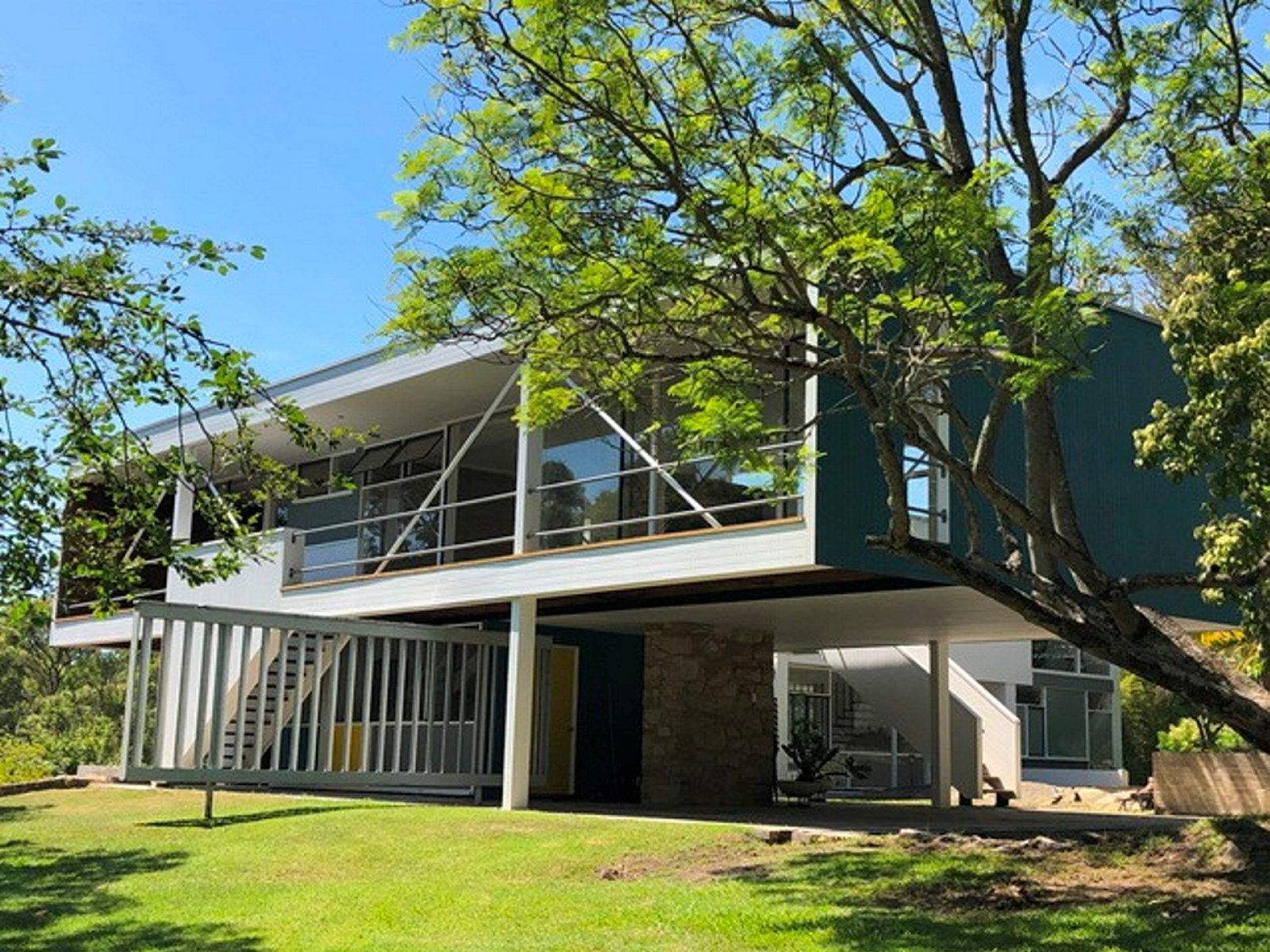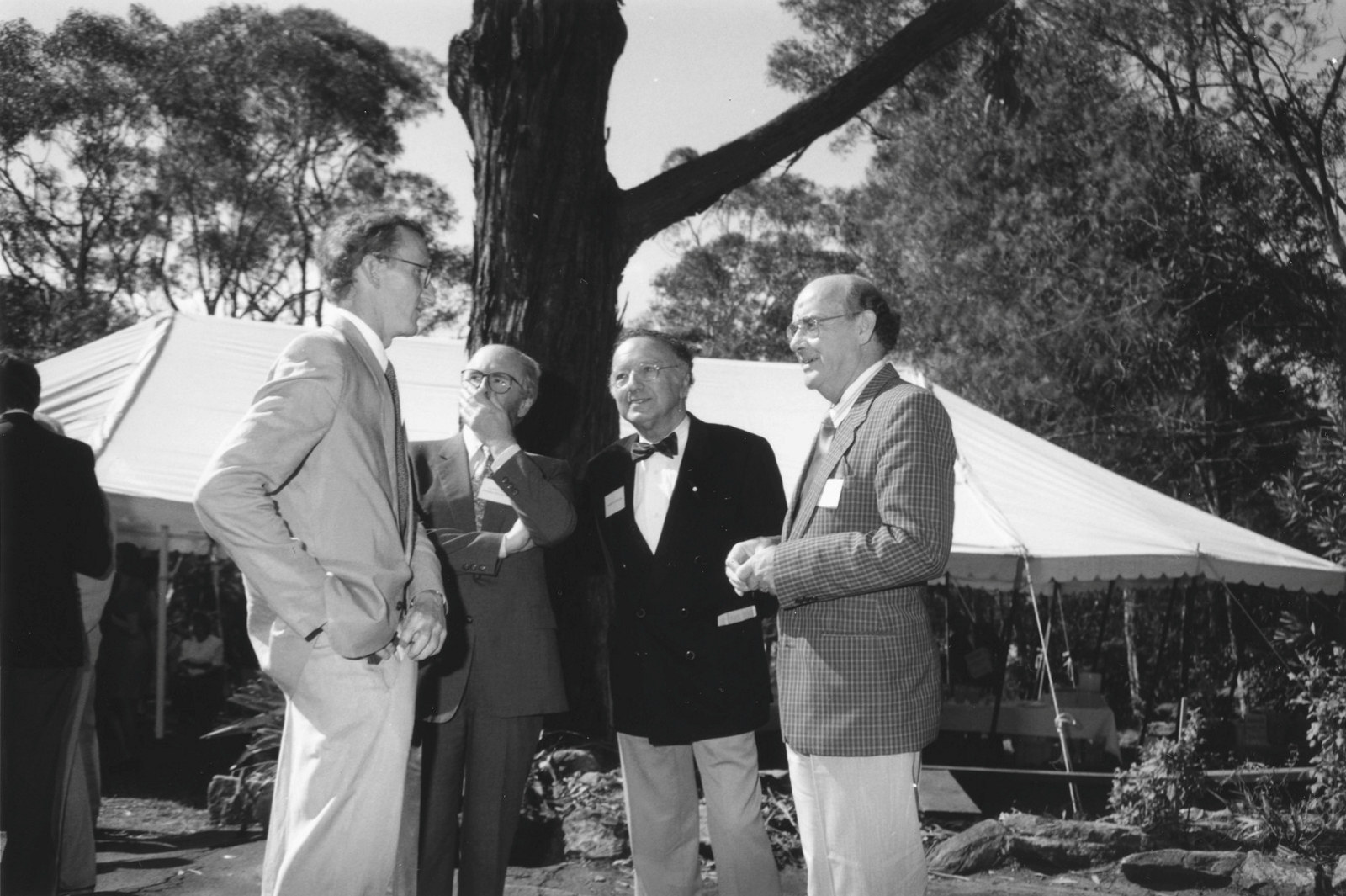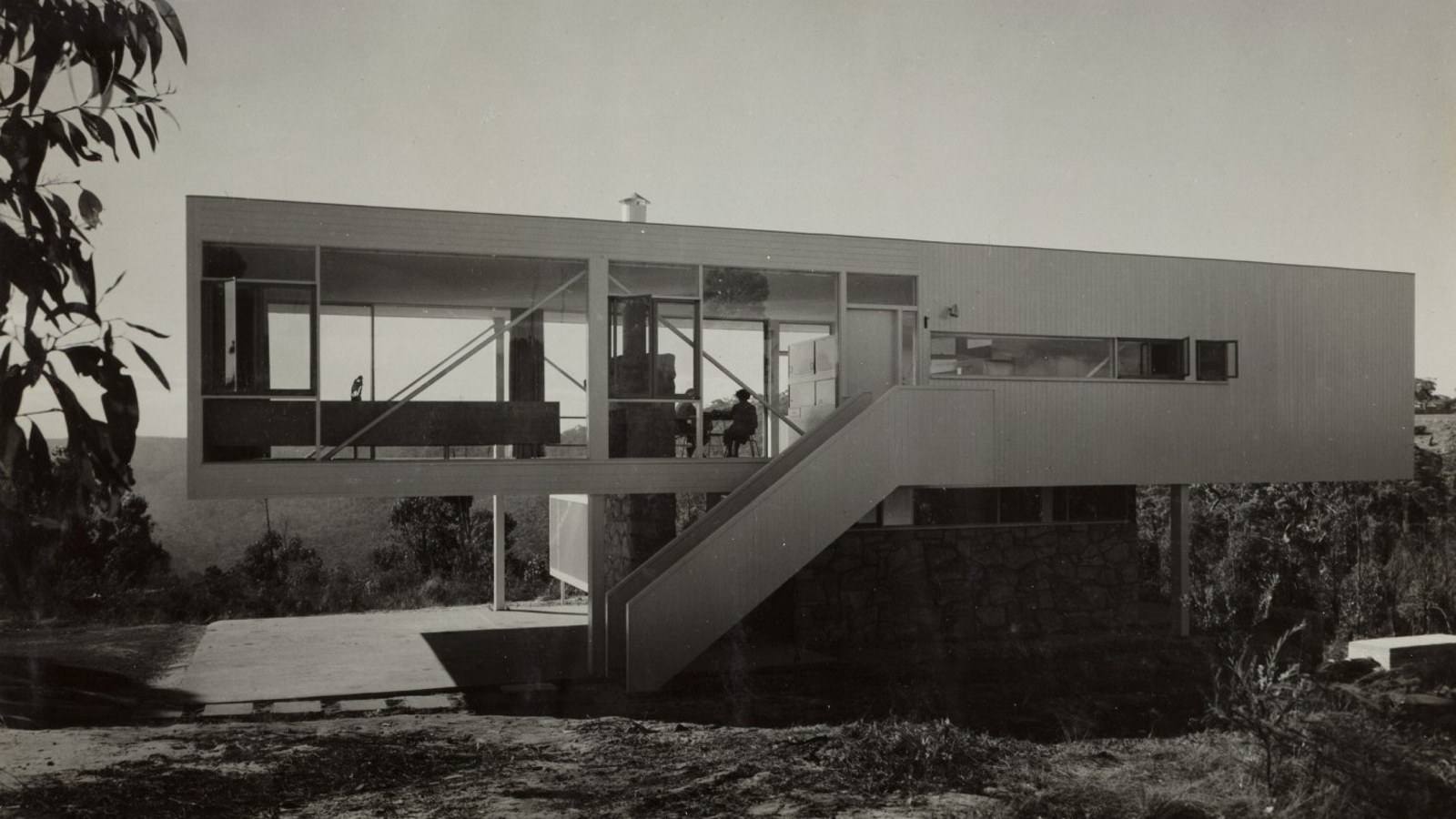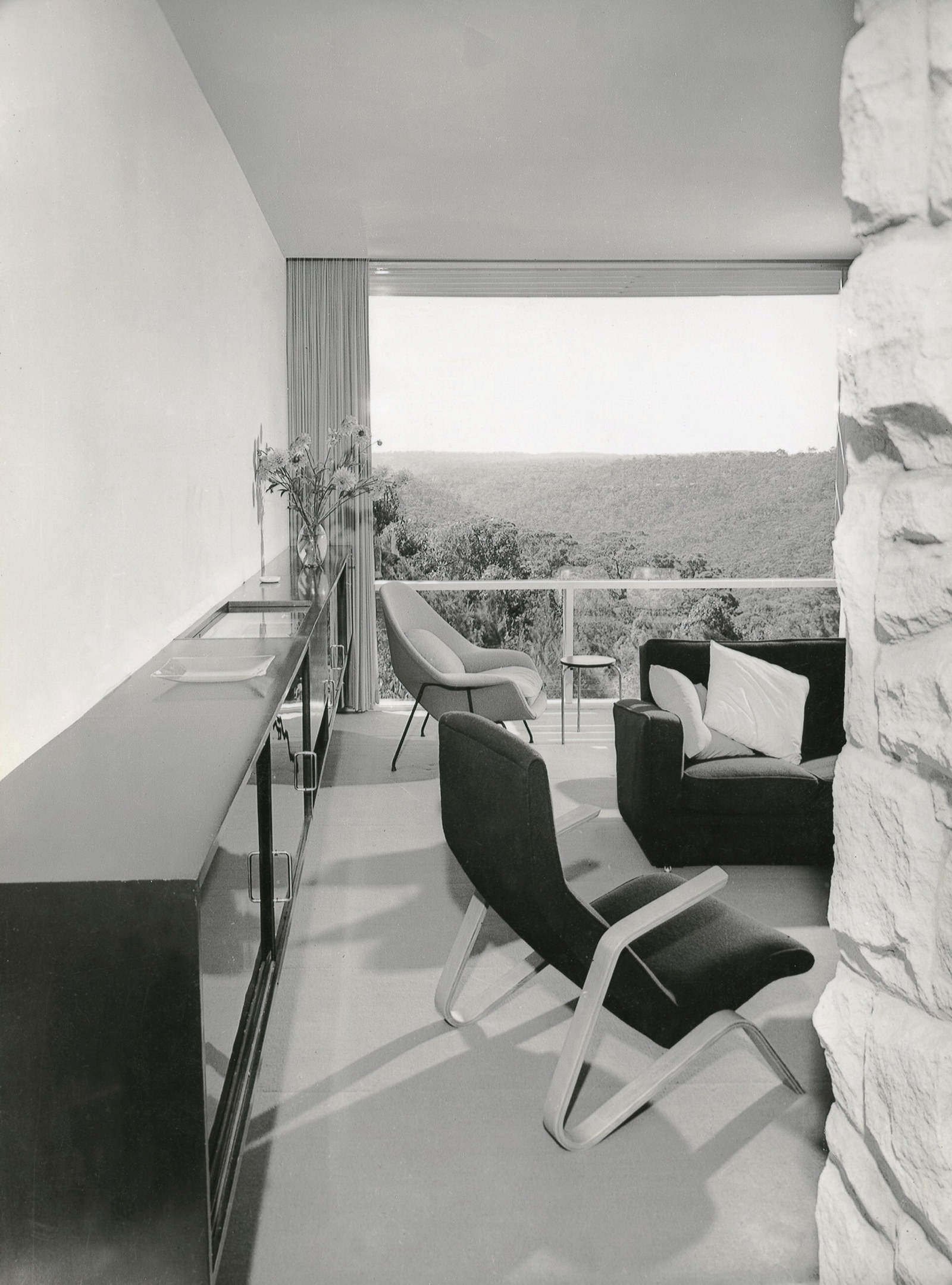When art meets architecture
Penelope Seidler AM talks about her extraordinary 50- year collaboration with her husband, Harry Seidler AC, and our 2014 exhibition exploring his life and work.
Our past exhibition Harry Seidler: Painting Toward Architecture provided a fascinating insight into the lives of Penelope Seidler AM and her late husband, renowned architect Harry Seidler AC. The exhibition revealed the couple’s passion for art and how it was integral to their vision for architecture. As Penelope wisely says, ‘There’s only one rule in art – if you want to buy something, buy what you like’.
The exhibition illuminated the acclaimed designs and long-lasting collaborations Harry Seidler forged with the great names in art, architecture, design and engineering. At its heart was Penelope’s private collection of paintings and sculpture, as well as films, sketches, original plans, personal photography and correspondence – many of them never seen before in public.
Curated by Dr Caroline Butler-Bowdon and New York based Vladimir Belogolovsky from Intercontinental Curatorial Project, the exhibition’s outstanding content was drawn from Harry and Penelope’s family home at Killara, the Harry Seidler & Associates architectural firm and other major cultural institutions around Australia.
Architecture is as much a part of the realm of art as it is of technology; the fusion of thinking and feeling.1
Harry Seidler
A 50-year creative collaboration
Throughout Harry’s stellar career, which continued until his death in 2006, he worked closely with his wife and collaborator, Penelope, formerly Penelope Evatt, the second daughter of barrister and NSW government minister Clive R Evatt. From the outset, Penelope recognised her husband’s brilliance and determination. ‘When there was a new design problem, Harry wouldn’t stop thinking about it. He was totally possessed by it’, recalls Penelope, who became a qualified architect in 1964. ‘He would sketch and say to me, “What do you think of this?”, and we would discuss various points of his drawing. He did it all but he trusted my advice.’
Many of these original drawings and plans featured in the exhibition, alongside works of art by all the big names of 20th-century abstract painting and sculpture that the Seidlers collected together.
‘Harry was a student of Josef Albers in the early 1940s at Black Mountain College Museum + Arts Center [North Carolina]’, says Penelope, referring to the German-born artist and professor. ‘Before Harry came to Australia, he bought a few of Albers’s lithographs. Then the Museum of Modern Art in New York sent an amazing exhibition to Australia: Two Decades of American Painting. It opened at the Art Gallery of NSW in 1967, which was the year our house [in Killara] was finished. Fortunately, they were selling some of the works and we were able to buy [Albers’s] The homage to the square. We kept it in the study and it’s still there – it’s been a real joy.’
Along with The homage to the square, another of the major works of art displayed in Harry Seidler: Painting Toward Architecture is the 1923 painting in gouache on paper titled Space-time construction #3 by Theo van Doesburg, the renowned founder and leader of the Dutch artistic movement De Stijl. Penelope notes that the impact of this work on Harry was so profound it informed much of his life’s work: ‘He saw it at an exhibition in New York when he lived there and eventually acquired it from a Berlin dealer. He often used to talk about it at lectures and interviews. It shows the three-dimensional quality of architecture and spatial elements’.
Penelope generously donated the work to the National Gallery of Australia in memory of her husband. ‘It was too fragile and in the end we kept it in a cupboard. It just seemed wrong to do that.’
Mentors and friends
Harry and Penelope’s passion for art went much further than just collecting works – they also built strong relationships with the artists themselves. Harry Seidler: Painting Toward Architecture explores the Seidlers’ long-lasting creative collaborations – a practice inherited from Harry’s mentor, teacher and friend, Bauhaus founder Walter Gropius.
The works of art from the Seidlers’ private collection vividly illustrate the long-lasting connections Harry and Penelope forged with many 20th-century creative visionaries, including Josef Albers, Frank Stella, Sol LeWitt, Charles Perry, Lin Utzon, Norman Carlberg and Max Dupain.
‘Harry drew his inspiration from a multitude of sources – architecture, painting, sculpture, technology, geometry, history, and so on’, says Belogolovsky. ‘His collaborative approach was multidimensional and consequential, always striving for logic, the highest quality of construction, and, of course, beauty. Step into the gallery and you will find yourself inside Harry’s creative world; it is like being inside of a painting, painting toward architecture.’2
Breaking ground – Australia Square
These collaborations extended to other key individuals, including Italy’s legendary engineer Pier Luigi Nervi, who worked with Harry on the design of Australia Square, the nation’s first concrete skyscraper. Without a doubt, the completion of Australia Square in 1967 forever changed the face of Sydney’s CBD. It was the world’s tallest lightweight concrete building and employed a radical circular design. ‘That was incredible’, recalls Penelope. ‘Harry spent four or five weeks in Rome working with [Nervi] and visiting his studio. I was doing my final exams at the time and he used to write me a postcard every day.’
In 1966 Gerardus (Dick) Dusseldorp, founder of property group Lend Lease, sent Harry around the world on an expedition to find works of art for the 50-storey Australia Square. Accompanied by Penelope, Harry visited some of the 20th-century’s most highly acclaimed artists, including Henry Moore, Isamu Noguchi and Alexander Calder. Before too long, Calder was commissioned to create the dramatic metal sculpture Crossed blades, which is positioned outside the tower.
To accompany Calder’s sculpture, the Seidlers selected a superb collection of works for the building’s interior, among them a sculpture by Norman Carlberg and tapestries by Joan Miró, Australian artist John Olsen, Le Corbusier and Victor Vasarely (works by the latter two were replaced by a LeWitt mural in 2002). These important works were undoubtedly evidence of Seidler’s distinctive way of interweaving art and architecture. ‘In all of Seidler’s projects, every artwork has its place, and it is there because it has a particular relationship with the spatial qualities of a room, a corner, or a wall’,3 says Belogolovsky in his recently released tome, Harry Seidler: lifework.
Harry and Penelope Seidler’s partnership was one of passion, vision and determination, and embraced art, architecture, design and technology over many decades. Penelope has worked closely with SLM staff to share the Seidlers’ personal collection with the public. Displayed alongside the major works of art were letters, diaries, photographs and other personal items, such as Harry’s drawing tools, ubiquitous bow tie and glasses – all reflecting his extraordinary life and the incredible bond and vision Harry and Penelope shared.
Penelope Seidler was interviewed for this article in July 2014.
Notes
1. Harry Seidler, 1955–63: houses, buildings and projects, Horwitz Publications, Sydney, 1963.
2. Vladimir Belogolovsky, email, July 2014.
3. Vladimir Belogolovsky, Harry Seidler: lifework, Rizzoli International Publications, New York, 2014, p31.
Past exhibition

Past Exhibition
Past exhibition
Harry Seidler: Painting Toward Architecture
The grand designs, famed collaborators and stunning personal collection of the visionary who defined Sydney’s skyline
Published on
Related
Browse all
Conserving Harry Seidler’s sofa
A sofa Harry Seidler designed for Rose Seidler House was conserved and reupholstered, and the process revealed some unexpected findings

Eulogy Harry Seidler AC OBE 1923-2006
This is an edited version of a eulogy given by Peter Watts at Harry Seidler's Memorial Service at the Theatre Royal, Sydney, 6 April 2006

The Julian Rose house
A family photo album donated to the Caroline Simpson Library, documents the construction of an architectural icon – the Julian Rose house, designed by architect Harry Seidler in 1951

An environment for living: Rose Seidler House
From the curtains to the coffee table and the cutlery, every object and fitting in the house Harry Seidler designed for his parents was of a functional and flexible design that reflected the modern lifestyle